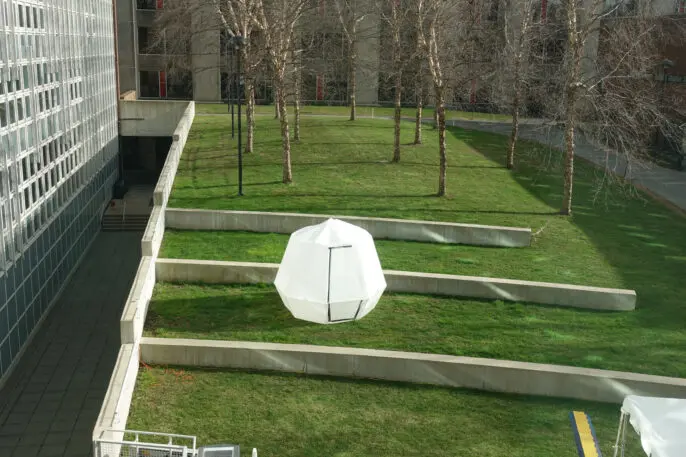In the wake of a disaster—like the earthquake that struck Mamuju, Indonesia, earlier this year, damaging thousands of homes—one of the challenges is how to quickly build shelters to house people in the aftermath. After the Indonesian quake, many families ended up in makeshift shelters that didn’t offer protection from ongoing monsoon rains. Tents help, but also take time to put up. A new design could help speed up the process by combining the idea of an inflatable bouncy house with origami.
[Image: courtesy Katia Bertoldi]“Our idea was to simplify the process,” says Katia Bertoldi, a professor of applied mechanics at Harvard and senior author of a paper in Nature describing the new approach. “Emergency shelters and tents have been used for a long time, and they’re good because they take up limited storage space and then you can deploy and use them. A limitation with the current available designs is that in order to get them in place, it requires quite a bit of work.”
[Image: courtesy Katia Bertoldi]The researchers spent three years experimenting with the math and physics necessary to make a new type of structure that could pop up nearly instantly like an inflatable tent, but that would also stay in place without continuous pressure from an air pump. “This is possible by carefully designing the geometry,” Bertoldi says. The design is inspired by origami shapes that are “bistable,” meaning that they’re equally sturdy when flat or when fully expanded. After the new structure is inflated, it clicks into place permanently—without a frame holding it up—until someone wants to take the structure down.

The same basic geometry could be used with different materials, and the structures should cost little to manufacture. Now that they’ve worked through the science, the researchers are beginning to consider commercialization. The approach could potentially be used in multiple ways, from packaging, to pop-up barriers to protect buildings from flooding when rivers flood, to outdoor pagodas at schools trying to avoid the spread of COVID. But pop-up disaster shelters may be a particularly good fit for the design. “It can be much easier to deploy and to put in use,” Bertoldi says.
Recognize your brand’s excellence by applying to this year’s Brands That Matter Awards before the early-rate deadline, May 3.
